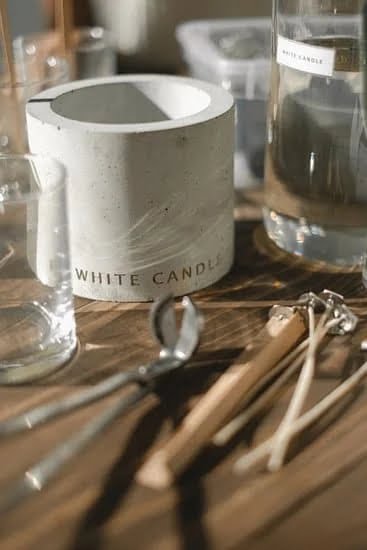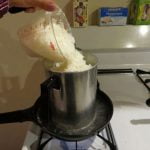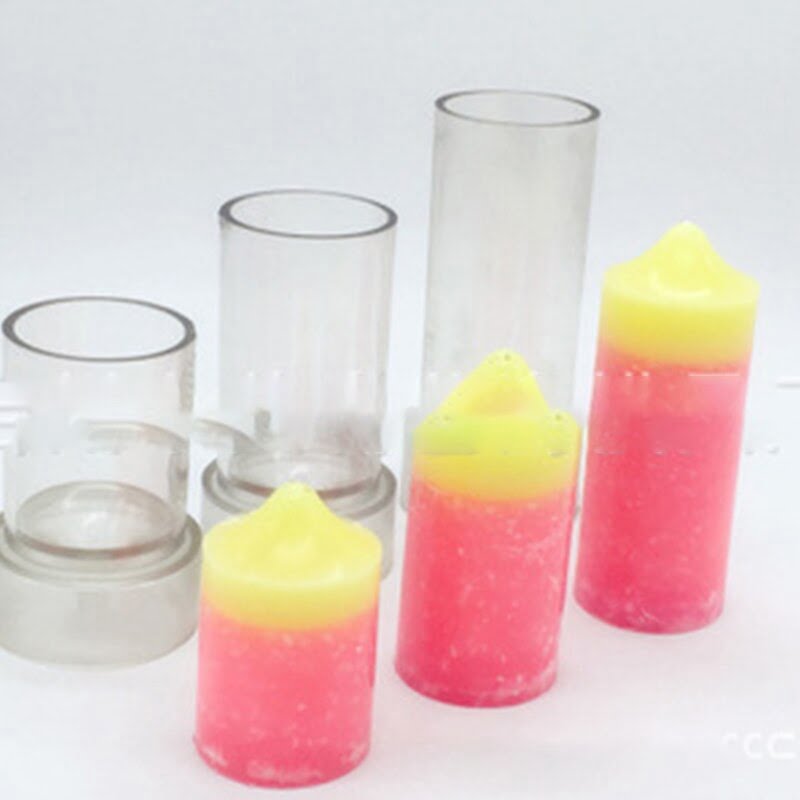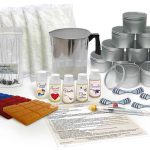Are you looking for a creative and rewarding hobby? Have you considered making homemade candles? In recent years, there has been a growing trend of people making their own candles, whether for personal use or as a small business venture. This article will provide you with the essential instructions for making homemade candles using natural and non-toxic materials, ensuring that you can enjoy this craft safely and sustainably.
When it comes to candle making, using natural and non-toxic materials is crucial. With the rise in awareness of environmental and health concerns, many people are seeking alternatives to commercial candles made with synthetic fragrances and paraffin wax. Making your own candles allows you to have full control over the ingredients, ensuring that they are safe for you and your loved ones.
In this article, we will cover everything from the essential tools and materials needed for homemade candle making, to choosing the right wax, adding fragrance and color, safety precautions, step-by-step instructions, troubleshooting common issues, decorating and packaging ideas, as well as final thoughts and encouragement for readers to try their hand at this fulfilling craft.
Whether you are a beginner or an experienced candle maker, there will be useful information to help improve your skills and create beautiful homemade candles.
Essential Tools and Materials
When it comes to making homemade candles, having the essential tools and materials is crucial for success. To get started, you will need a few key items to ensure that your candle-making process goes smoothly. One of the most important tools you will need is a double boiler or a large saucepan for melting the wax.
This will help prevent the wax from scorching and ensure even melting. Additionally, a thermometer is essential for monitoring the temperature of the wax, as overheating can result in safety hazards.
In addition to tools, you will also need various materials for making homemade candles. High-quality wax is perhaps the most crucial component of candle making. There are several types of wax available, including soy wax, beeswax, and paraffin wax.
Each type of wax has its own pros and cons, so it’s important to choose one that aligns with your preferences and needs. Additionally, wicks, fragrance oils, and candle dyes are necessary for adding scent and color to your candles.
Furthermore, containers such as glass jars or tins are needed to hold the melted wax while it solidifies. When choosing containers, it’s important to consider heat resistance and aesthetics. Finally, you’ll also need basic household items such as a heat-resistant stirring utensil and a scale for measuring ingredients accurately. By having these essential tools and materials on hand, you’ll be well-equipped to start making your own homemade candles.
As with any craft or hobby, having the right tools and materials can make all the difference in the quality of the end product. For this reason, it’s important to invest in high-quality items that will contribute to the success of your candle-making endeavors. With proper tools and materials at your disposal, you’ll be able to create beautiful homemade candles that are both safe and enjoyable to use.
Choosing the Right Wax
When it comes to choosing the right wax for homemade candle making, there are a few options to consider. The most common types of wax used in candle making are paraffin, soy, beeswax, and coconut wax. Each type of wax has its own pros and cons, so it’s important to understand the differences before making a decision.
Types of Wax
Paraffin wax is the most commonly used wax for candle making due to its affordability and ease of use. However, it is derived from petroleum byproducts, which may not be ideal for those looking for natural and non-toxic options. On the other hand, soy wax is a renewable and biodegradable option that burns cleaner and longer than paraffin. Beeswax is another natural option known for its subtle honey aroma and dripless burn.
Pros and Cons
While paraffin wax may be more affordable, it emits potentially harmful chemicals when burned. Soy wax is an eco-friendly alternative that supports sustainable agriculture, but it does have a softer texture that may affect the appearance of the finished candle. Beeswax produces a bright flame and pleasant aroma but can be more expensive compared to other waxes.
Where to Purchase High-Quality Wax
For those looking to purchase high-quality wax for their homemade candles, there are several reputable suppliers both online and in local craft stores. It’s important to look for waxes that are specifically labeled as suitable for candle making and ensure they are free from additives or impurities that could affect the quality of the final product.
Some popular suppliers include CandleScience, Lone Star Candle Supply, and Nature’s Garden. By choosing the right type of wax for your homemade candles, you can create beautiful and long-lasting products that align with your values regarding natural and non-toxic materials.
Adding Fragrance and Color
When making homemade candles, adding fragrance and color is an important step to create a unique and customized product. There are several options available for adding scents and achieving vibrant colors, allowing you to create the perfect candle for any occasion. Here are some tips and instructions for making homemade candles with the perfect fragrance and color:
Adding Fragrance:
- Choose high-quality fragrance oils specifically designed for candle making
- Follow the recommended usage rates provided by the fragrance oil manufacturer
- Consider experimenting with different scent combinations to create your own unique blends
Adding Color:
- Use liquid or dye chips specifically made for candle making to achieve vibrant colors
- Start with a small amount of colorant and gradually add more until the desired shade is achieved
- Consider using natural colorants such as mica powder for a more eco-friendly option
It’s important to note that when adding fragrance and color to your homemade candles, it’s essential to follow the recommended guidelines and measurements. Using too much fragrance oil can affect the burning quality of the candle, while using too much colorant can impact the overall appearance. By carefully following these instructions, you can create beautifully scented and colored homemade candles that are both safe and visually appealing.
Safety Precautions
Making homemade candles can be a fun and rewarding experience, but it’s important to prioritize safety when working with hot wax and open flames. Whether you’re a beginner or an experienced candle maker, following these safety precautions is crucial to prevent accidents and ensure a safe candle-making process.
Important Safety Tips
When working with hot wax, it’s essential to use caution and protect yourself from burns. Always wear heat-resistant gloves and long sleeves to minimize the risk of injury. Additionally, ensure that your work area is free from any flammable materials and that there are no distractions or obstacles that could cause accidents.
Proper Ventilation and Fire Safety Measures
Adequate ventilation is crucial when melting wax and adding fragrance oils to your candles. Make sure your workspace is well-ventilated to prevent inhaling harmful fumes. Additionally, keep a fire extinguisher within reach in case of emergencies, and never leave hot wax unattended. It’s also important to have a clear understanding of fire safety protocols and know how to handle any potential candle-related fires.
Protective Clothing
In addition to heat-resistant gloves and long sleeves, wearing an apron or smock can help protect your clothing from spills and splatters while making candles. Avoid loose-fitting clothing that could easily catch fire, and always tie back long hair or secure it with a hair tie.
By following these safety precautions for making homemade candles, you can enjoy the creative process while minimizing the risk of accidents or injuries. Remember that safety should always be a top priority when working with hot wax and open flames, so take the necessary steps to protect yourself and those around you during the candle-making process.
Step-by-Step Instructions
Making homemade candles can be a fun and rewarding experience, allowing you to create personalized and natural alternatives to store-bought candles. To get started, you will need the following tools and materials:
Once you have gathered all the necessary tools and materials, it’s time to begin the candle making process. Follow these step-by-step instructions for making homemade candles:
1. Prepare your workspace: Cover your work area with newspaper or a protective mat and gather all your supplies. Ensure that your workspace is clean and free from any clutter.
2. Measure the wax: Use a kitchen scale to measure the amount of wax needed based on the size of your chosen containers. As a general rule, you will need approximately 1 pound of wax per 20 ounces of volume in your containers.
3. Melt the wax: Place the wax in a double boiler or melting pot and heat it gently until it reaches a temperature of around 185°F. Use a thermometer to monitor the temperature and avoid overheating the wax.
4. Add fragrance and color: Once the wax has melted, remove it from the heat source and stir in your chosen fragrance oil and candle dye according to the manufacturer’s instructions.
5. Prepare the containers: Place a wick at the center of each container using a wick holder or chopstick to keep it upright. Secure the wick in place by wrapping it around the holder.
6. Pour the wax: Carefully pour the scented and colored wax into each container, ensuring that the wick remains centered. Leave some space at the top to allow for shrinkage as the candle cools.
7. Let it cool: Allow the candles to cool and solidify completely before trimming the wicks to approximately ¼ inch in length.
By following these step-by-step instructions for making homemade candles, you can create beautiful and fragrant candles for yourself or as thoughtful gifts for friends and family members. Experiment with different scents, colors, and container sizes to customize your creations according to your preferences.
Troubleshooting Common Issues
Making homemade candles is a rewarding and creative hobby that allows individuals to personalize their living spaces with unique scents and designs. However, like any craft, candle making can come with its own set of challenges. In this section, we will address some common issues that may arise during the candle-making process and provide solutions for troubleshooting these problems.
One common issue that candle makers may encounter is the presence of sinkholes or air bubbles in their finished candles. These imperfections can detract from the overall appearance of the candle and affect its burning performance. To prevent sinkholes, it is essential to pour the wax at the correct temperature and avoid rapid cooling. A heat gun can be used to carefully melt the surface of the candle and remove any trapped air bubbles before it fully sets.
Another issue that candle makers may face is uneven burning or wax drips during the candle’s use. This can often be attributed to factors such as wick size and placement, as well as environmental conditions such as drafts or uneven surfaces.
To address this problem, it is important to ensure that the wick is centered within the container and trimmed to the appropriate length before each use. Additionally, choosing high-quality wicks designed for specific types of wax can help prevent uneven burning and dripping.
By understanding these common issues and implementing effective troubleshooting techniques, aspiring candle makers can improve their craft and create high-quality homemade candles that burn evenly and look visually appealing.
| Common Issues | Troubleshooting Solutions |
|---|---|
| Sinkholes or air bubbles | Pouring wax at correct temperature; using heat gun to remove air bubbles |
| Uneven burning or wax drips | Ensuring proper wick size and placement; choosing high-quality wicks suitable for specific types of wax |
Decorating and Packaging
Once you have successfully made your homemade candles, the next step is to think about how to decorate and package them. This step is crucial, especially if you plan on giving them as gifts or selling them. There are many creative ways to add a personal touch to your candles and make them stand out.
When it comes to decorating homemade candles, the options are endless. You can use dried flowers, herbs, or even glitter to give your candles a unique and decorative look. Another popular option is to use heat-resistant stickers or decals to add a special message or design to the outside of the candle.
Packaging is also an important aspect of homemade candle making. You want your candles to be protected during transportation and presented beautifully when given as gifts. Consider using natural materials such as kraft paper or burlap for a rustic look, or opt for sleek and elegant packaging for a more modern feel.
For those who plan on selling their homemade candles, it’s important to invest in professional-looking packaging that reflects the quality of your product. Consider custom labels and packaging with your brand name and logo for a polished finish.
| Decorating Ideas | Packaging Options |
|---|---|
| Dried flowers | Kraft paper |
| Heat-resistant stickers | Burlap |
| Glitter accents | Custom labels |
Taking the time to decorate and package your homemade candles will not only enhance their visual appeal but also add a personal touch that will be appreciated by those who receive them. Whether you’re making candles for yourself or others, adding these extra touches shows care and attention to detail in your craft.
Conclusion and Next Steps
In conclusion, making homemade candles can be a rewarding and satisfying experience. Not only does it allow you to create personalized and unique candles for yourself, but it also provides the opportunity to give thoughtful, one-of-a-kind gifts to friends and family. By following the instructions for making homemade candles, you can ensure that your candles are made from natural and non-toxic materials, promoting a healthier and more eco-friendly environment.
As you embark on your candle-making journey, remember the importance of safety precautions when working with hot wax and open flames. Ventilation and fire safety measures should never be overlooked. Additionally, take the time to troubleshoot common issues that may arise during the candle-making process, ensuring that your final products are of high quality.
For those who have yet to try their hand at candle making, I encourage you to take the first step towards creating your own beautiful and fragrant candles. Experiment with different scents, colors, and designs to truly make each candle your own.
Whether you choose to keep them for yourself or share them with others through creative packaging and decorating ideas, homemade candles are a wonderful way to express creativity and mindfulness in a fast-paced world. So go ahead, gather your essential tools and materials, choose the right wax, add fragrance and color with care – it’s time to start making homemade candles.
Frequently Asked Questions
How to Make Candles Step by Step?
Making candles step by step involves gathering the necessary materials such as wax, wick, fragrance oils, and dyes. Then, melting the wax, adding color and scent if desired, setting the wick in the container, and pouring the wax.
What Is the Formula for Candle Making?
The formula for candle making typically involves using 1 pound of wax, 1 ounce of fragrance oil, and a suitable-sized wick for the container or mold being used. This can be adjusted based on personal preferences and experience.
What Are the Best Ingredients for Homemade Candles?
The best ingredients for homemade candles include natural soy or beeswax, high-quality fragrance oils or essential oils for scent, and non-toxic colorants if desired. Choosing eco-friendly options is also important for sustainable candle making practices.

Welcome to my candle making blog! In this blog, I will be sharing my tips and tricks for making candles. I will also be sharing some of my favorite recipes.





